Monday, September 1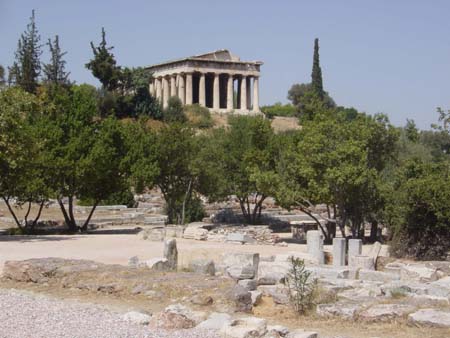
Steve: We had a great day today exploring more of the
historical sites in Athens. We planned to get started early to avoid the brutal
part of the heat, but had to spend the morning dealing with travel logistics.
We've been trying for three days to make a 1-day change in our flight plan
to Rome, but Olympic Airways just hasn't wanted to cooperate. It's a very
long story, but we've been learning the hard way how difficult it can be to
deal with flight reservations abroad. The net result was that we needed to
physically get to the Olympic Airways office this morning. Of course, when
we arrived their system was down… (no more of the boring details for
now).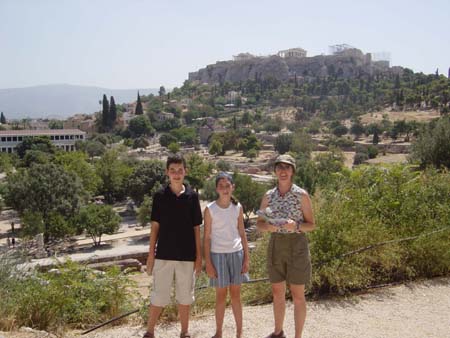
We went by subway to the Ancient Agora, which was the center of activity
in Athens for hundreds of years. The Agora was the primary place where commercial
and political activity happened in Athens, and it is possible to walk through
the site and see the ruins of the various buildings, temples and roadways.
The Agora is situated just below the Acropolis, and there are great views
up to the Parthenon from the entire area. The best preserved building on the
site is the Temple of Hephaestus, which sits on the far end of the Agora.
We enjoyed studying the map of the area, and seeing where all the various
buildings and functions were located. We also saw the main public speaking
platform - this is where Socrates expounded his ideas and philosophies. 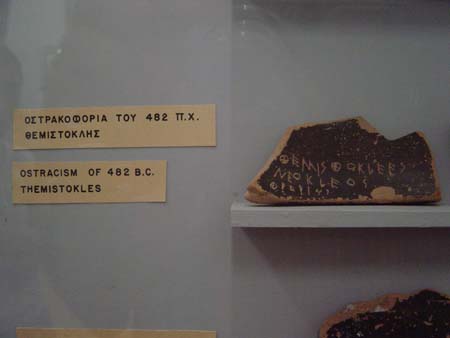
The Agora Museum is small but spectacular. There's a wide collection of artifacts,
all found on the site of the Agora. We particularly enjoyed seeing items such
as a water clock, used to time speakers during trials. There is also a collection
of ballots used to ostracize individuals who were considered to be getting
too powerful. It was fascinating to see the actual ballots and the inscriptions
of names, including leaders such as Themistocles (the Athenian general who
had successfully defeated the Persians in the Battle of Salamis).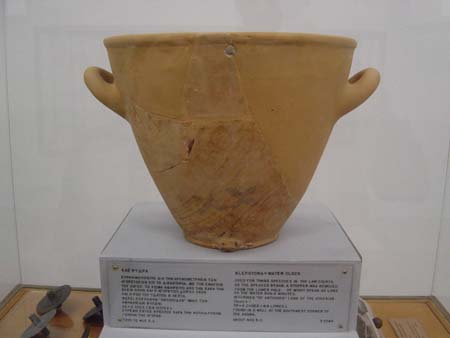 The museum houses a collection of the small cups used to hold the hemlock
poison that condemned prisoners were forced to drink. Socrates would have
drunk the hemlock from this type of cup. David and Katie both enjoyed spending
time in the museum, and especially seeing the actual items that they have
been learning about during our studies of Greek history.
The museum houses a collection of the small cups used to hold the hemlock
poison that condemned prisoners were forced to drink. Socrates would have
drunk the hemlock from this type of cup. David and Katie both enjoyed spending
time in the museum, and especially seeing the actual items that they have
been learning about during our studies of Greek history.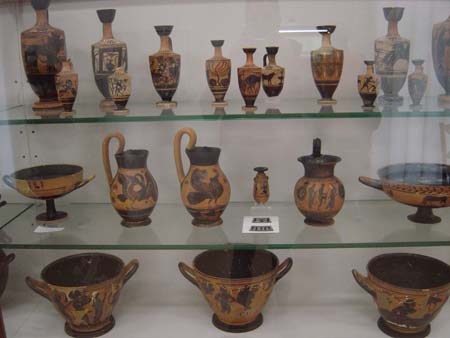
After lunch, we took the subway to Syntagma station, which is the center
of modern Athens. The subway station at Syntagma is Athens' showcase, and
there are several more displays showing how it was built and the discoveries
that were made during construction. We've observed that this shiny and new
subway system seems to be underutilized. Today was a Monday, and the first
day back to work for many Athenians who are returning from their summer vacations.
Despite this, the subways seemed to be very quiet and empty. We're not sure
why this is, but assume that Athenians still want to drive their cars for
some reason - the roads are certainly very busy.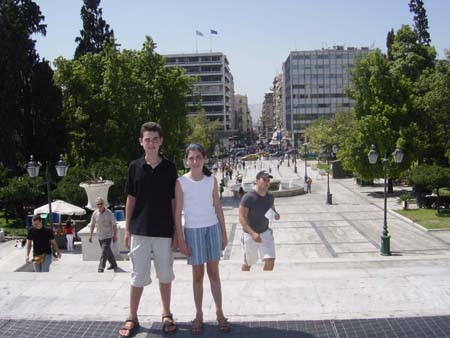
We walked through the National Gardens, located beside the Greek Parliament, on our way to the Benaki Museum. Athens does not have much park space, but the gardens seemed very pleasant and well maintained. Of course in today's heat, it wasn't very comfortable to sit outside (even in the shade), so we didn't see many people there.
The Benaki Museum is a private collection of Greek history, dating from ancient times all the way through to the formation of the Modern Greek State. We decided to spend our time focusing on the ancient Greek periods, and enjoyed seeing the displays of pottery, jewelry, statues, and coins.
We returned to our hotel in the middle of the afternoon to escape the heat, and catch up on some of our reading and studies. Tomorrow we have planned a full-day excursion with a private guide to Mycenae and Corinth.
It's hard to believe that it's September! We've now completed two full months on the road, and look back with amazement at how much we've accomplished. Most of September will find us in Italy, and we're especially looking forward to enjoying the food, history and scenery of Tuscany.
Distance Walked: 4.09 miles (not bad, considering the heat!)
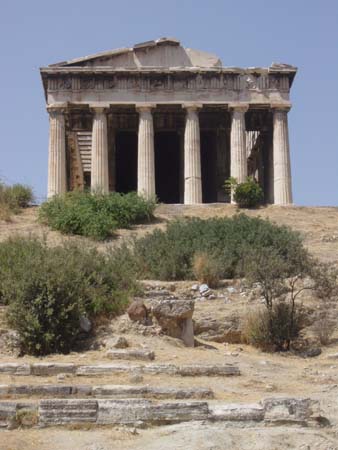
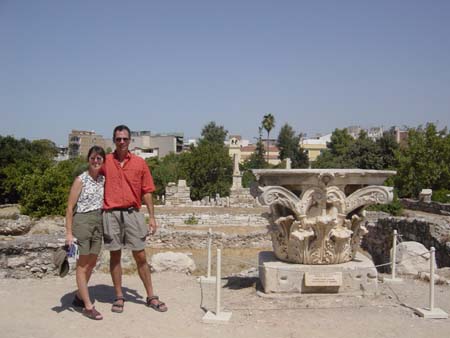
David's Downloads…. Halfway through our first trip
Halfway through our first trip, it's hard to believe how much I've learned.
It's really incredible for me to look back and think about all the places
I've been and studied about. I have learned much more than I realized. It's
hard to remember everything because of our rapid movement between countries.
One day I will be reading about the history of Moscow, and the next about
Istanbul! We have been to nine different countries, stayed in fifteen hotels,
visited about twenty cities, and walked almost 250 miles throughout Europe!
Although it seems that the information I learn goes in one ear and out the
other, it really gets pounded and engraved into my ever growing brain.
My parents and I are truly amazed at how much we have learned so far. I could go on and on about everything I've studied, but that would take forever. Here are some examples of things that I learned that I never knew anything about…
- The British parliament and government
- Communism and the Soviet Union
- Prague Spring
- World War II
- Ancient Greek History
- Greek Mythology
- Concentration camps
Sometimes it's hard to appreciate the importance of learning so much right now. I know that once I start school again and get older that I will begin to understand the real importance of this trip. Although it's hard to learn more and more day after day, I would rather be learning and traveling at the same time than learning it in a classroom like my friends are now!!
